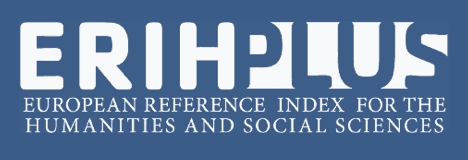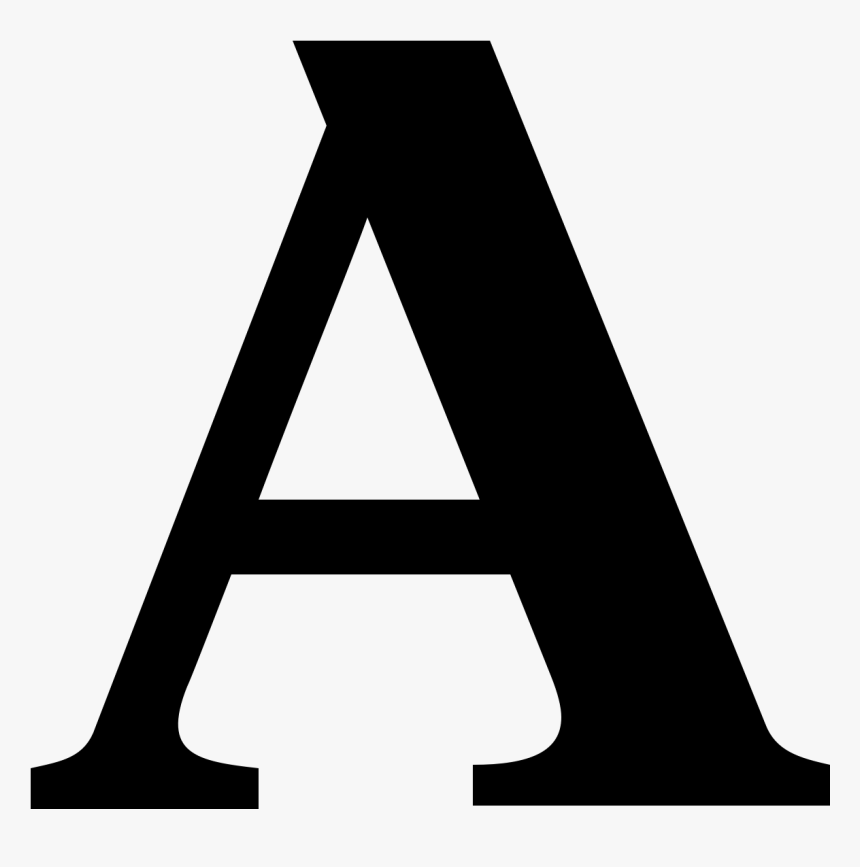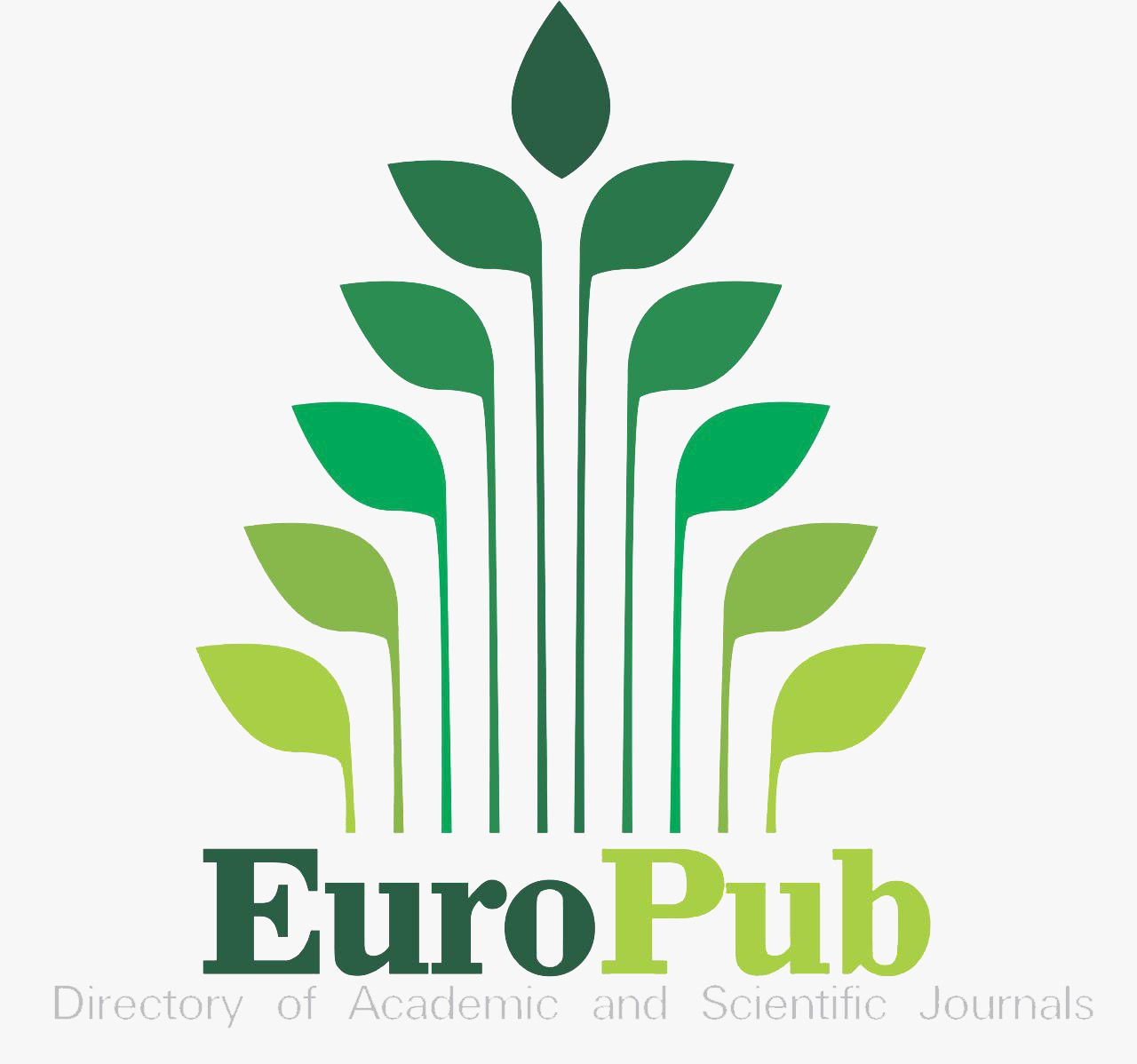- Publication Ethics
- Copy Rights
- Authorship
- Self Archiving
- Conflict of Interest
- Appeals and Complaints
- Corrections and Retractions
- Misconduct
- CrossMark Policy
- Screening Plagiarism
- Submission Guidelines
- Peer Review Process
- Open Access Policy
- Article processing charges (APC)
Publication Ethics
Guidelines for Reviewers
- Reviewers are not allowed personal criticism on author.
- Reviewers comment should be unbiased. Research work should be judged based on content instead of race, gender, nationality etc. Reviewer should provide comprehend and substantial review report.
- Reviewers should keep review process confidential. Information regarding peer review process should not be share with any third party.
- Reviewers are bound to evaluate all citations included in research work. Also, reviewer must inform editor in case if there exist significant similarity between submitted manuscript and already published work.
Guidelines for Authors
Authors should guarantee that the work is original and does invade the rights of any other person or entity.
- All authors of the research work are equally accountable for the content presented in the document. It is the responsibility of corresponding author to ensure that all author mentioned in research work give their consent for publication.
- Authors should provide access to data sets mentioned in the research work.
- Authors should not submit same manuscript in more than one journal at a time, also they should not submit already published work either in part or whole.
- Authors should declare potential conflict of interest (either professional of financial) related to research article. Also, authors should reveal all sources of funding for the research work.
- Authors should provide all formal documented ethical approval form from concerned ethics committee.
- Authors should cite all relevant sources utilized to gather information for their research work.
Guidelines for Editors
- Editor’s consideration about submitted manuscript should be unbiased. Editor is bound to keep peer review process confidential. Information regarding manuscript or author should not disclose to any third party.
- Editors should develop and follow consistent criteria in their peer review processes.
- Editor should put their best effort to evaluate manuscript timely and effectively.
- It the responsibility of editor to properly investigate claim about manuscript (under consideration) submission to more than one journal or already published work.
- If article in inappropriate or does not match with the scope of journal, then editor has right to reject manuscript without forwarding it to peer review process.
- Editors ought to plan to guarantee timely review process and publication and ought to stay away from superfluous postponements. Editors ought to consider how best to impart data to author about any deferrals that happen. Online publication can give the quickest course to distribution and, therefore, to setting peer inspected research (and other) data in public domain.
- The utilization of unpublished research work must take after by the written consent of the original author.
Copy Rights
- Copyright on any open access article in a journal published by IJBEA is retained by the author(s). Authors grant IJBEA a license to publish the article and identify itself as the original publisher. Authors also grant any third party the right to use the article freely as long as its integrity is maintained and its original authors, citation details and publisher are identified.
- The Creative Commons Attribution-NonCommercial 4.0 formalizes these and other terms and conditions of publishing articles.
Exceptions to copyright policy
There may be exceptions concerning copyright and licensing for articles which were previously published under policies that are different from the above. For instance, different licensing conditions may then apply. In all such cases, however, access to these articles is free from fees or any other access restrictions.
Self Archiving
Note that the journal’s standard copyright agreement allows for self-archiving of different versions of the article under specific conditions. Here are the details regarding different versions;
Preprint Version:
The submitted version of an article is the author's version that has not been peer-reviewed, nor had any value added to it by IJBEA (such as formatting or copy editing).
The submitted version may be placed on:
- The author's personal website
- The author's company/institutional repository or archive
- Not for profit subject-based preprint servers or repositories
There is no obligation upon authors to remove preprints posted to not for profit preprint servers prior to submission.
Peer-reviewed Version:
The accepted version of an article is the version that incorporates all amendments made during the peer review process, but prior to the final published version (the Version of Record, which includes; copy and stylistic edits, online and print formatting, citation and other linking, deposit in abstracting and indexing services, and the addition of bibliographic and other material.
The accepted version may be placed on:
- The author's personal website
- The author's company/institutional repository or archive
- Not for profit subject-based repositories
Terms and Conditions for Use of Self-Archived Versions
The self-archived submitted and accepted versions may be used on the following terms:
Non-Commercial Use
For non-commercial and non-promotional research and private study purposes individual users may view, print, download and copy self-archived articles, as well as text and data mine the content under the following conditions:
- The authors' moral rights are not compromised. These rights include the right of "paternity" (the right for the author to be identified as such, also known as "attribution") and "integrity" (the right for the author not to have the work altered in such a way that the author's reputation or integrity may be damaged). All reuse must be fully attributed
- Where content in the article is identified as belonging to a third party, it is the obligation of the user to ensure that any reuse complies with the copyright policies of the owner of that content
- Self-archived content may not be re-published verbatim in whole or in part, whether or not for commercial purposes, in print or online. This restriction does not apply to use of quotations with appropriate citation, or text and data mining provided that the mining output is restricted to short excerpts of text and data and excludes images.
Conflict of Interest
Authors must disclose all relationships or interests that could influence or bias the work. Although an author may not feel there are conflicts, disclosure of relationships and interests affords a more transparent process, leading to an accurate and objective assessment of the work. Awareness of real or perceived conflicts of interests is a perspective to which the readers are entitled and is not meant to imply that a financial relationship with an organization that sponsored the research or compensation for consultancy work is inappropriate. Examples of potential conflicts of interests that are directly or indirectly related to the research may include but are not limited to the following:
- Research grants from funding agencies (please give the research funder and the grant number)
- Grants for speaking at symposia
- Financial support for attending conferences
- Financial support for educational programs
- Employment or consultation
- Support from a project sponsor
- Position on advisory board or board of directors or other type of management relationships
- Multiple affiliations
- Financial relationships, for example equity ownership or investment interest
- Intellectual property rights (e.g. patents, copyrights and royalties from such rights)
- Holdings of spouse and/or children that may have financial interest in the work
In addition, interests that go beyond financial interests and compensation (non-financial interests) that may be important to readers should be disclosed. These may include but are not limited to personal relationships or competing interests directly or indirectly tied to this research, or professional interests or personal beliefs that may influence your research.
The corresponding author collects the conflict of interest disclosure forms from all authors. In author collaborations where formal agreements for representation allow it, it is sufficient for the corresponding author to sign the disclosure form on behalf of all authors.
The corresponding author will include a summary statement on the title page that is separate from their manuscript, that reflects what is recorded in the potential conflict of interest disclosure form(s).
See below examples of disclosures:
Funding: This study was funded by X (grant number X).
Conflict of Interest: Author A has received research grants from Company A. Author B has received a speaker honorarium from Company X and owns stock in Company Y. Author C is a member of committee Z.
If no conflict exists, the authors should state:
Conflict of Interest: The authors declare that they have no conflict of interest.
Appeals and Complaints
The below procedure applies to appeals to editorial decisions, complaints about failure of processes such as long delays in handling papers and complaints about publication ethics. The complaint should in first instance be handled by the Editor-in-Chief(s) responsible for the journal and/or the Editor who handled the paper. Queries can be directly sent to the editor at editor@ijbea.com.
Complaint about scientific content, e.g. an appeal against rejection
The Editor-in-Chief or Handling Editor considers the authors’ argument, the reviewer reports and decides whether
- The decision to reject should stand;
- Another independent opinion is required
- The appeal should be considered.
The complainant is informed of the decision with an explanation if appropriate. Decisions on appeals are final and new submissions take priority over appeals.
Complaint about processes, e.g. time taken to review
The Editor-in-Chief together with the Handling Editor (where appropriate) and/or in-house contact (where appropriate) will investigate the matter. The complainant will be given appropriate feedback. Feedback is provided to relevant stakeholders to improve processes and procedures.
Complaint about publication ethics, e.g., researcher's author's, or reviewer's conduct
The Editor-in-Chief or Handling Editor follows guidelines published by the Committee on Publication Ethics. The Editor-in-Chief or Handling Editor may ask the publisher via their in-house contact for advice on difficult or complicated cases. The Editor-in-Chief or Handling Editor decides on a course of action and provides feedback to the complainant. If the complainant remains dissatisfied with the handling of their complaint, he or she can submit the complaint to the Committee on Publication Ethics.
Corrections and Retractions
Rarely, it may be necessary for IJBEA to publish [corrections] to, or [retractions] of, articles published in its journals, so as to maintain the integrity of the academic record. It may be possible for minor corrections to published articles to be made by the original author(s) posting a comment on the published article. This would only be appropriate where the changes do not affect the results or conclusions of the article.
Corrections
Changes to published articles that affect the interpretation and conclusion of the article, but do not fully invalidate the article, will, at the Editor(s)’ discretion, be corrected via publication of an Erratum that is indexed and linked to the original article. Changes in authorship of published articles are corrected via an Erratum.
Retractions
On rare occasions, when the scientific information in an article is substantially undermined, it may be necessary for published articles to be retracted. IJBEA will follow the COPE guidelines in such cases. Retraction articles are indexed and linked to the original article.
Misconduct
IJBEA takes seriously all allegations of potential misconduct. If there is a suspicion of misconduct, If, after investigation, the allegation seems to raise valid concerns, the accused author will be contacted and given an opportunity to address the issue. If misconduct has been established beyond reasonable doubt, this may result in the Editor-in-Chief’s implementation of the following measures, including, but not limited to:
- If the article is still under consideration, it may be rejected and returned to the author.
- If the article has already been published online, depending on the nature and severity of the infraction, either an erratum will be placed with the article or in severe cases retraction of the article will occur. The reason must be given in the published erratum or retraction note. Please note that retraction means that the paper is maintained on the platform, watermarked “retracted” and explanation for the retraction is provided in a note linked to the watermarked article.
- The author’s institution may be informed.
IJBEA will follow the COPE guidelines outlining how to deal with cases of potential publication misconduct.
CrossMark Policy:
CrossMark is a multi-publisher initiative to provide a standard way for readers to locate the current version of a piece of content. By applying the CrossMark logo, International Journal of Business and Economic Affairs (IJBEA) is committing to maintaining the content it publishes and to alerting readers to changes if and when they occur.
Clicking on the CrossMark logo will tell you the current status of a document and may also give you additional publication record information about the document.
Kindly visit CrossMark Website for more information.
Screening Plagiarism:
Plagiarism screening will also be conducted using Turnitin Online plagiarism detection.
Instructions for Authors
Authors are required to format their manuscript as per guidelines define by the journal.
- Research papers are accepted in English language only.
- Manuscript should be submitted in word form only.
- Document should be double space.
- Minimum acceptable length is 4000-8000 words.
Manuscript should be compiled as follow:
Title Page
Title page should include author names, affiliation and email addresses. Corresponding author should be identified.
Section Headings should be concise and bold-face. Divide your manuscript in clear sections.
Title, Keywords, and Abstract
The title, keywords, and abstract are critical in ensuring that readers locate your work online. Articles and essays should be accompanied by an interesting abstract of no more than 300 words (maximum): A good abstract describes the content offered in the paper, including the topic or focus, the type of study reported (e.g., conceptual, empirical, qualitative, field, network study, etc.), the context, the primary data source, and the most important findings and contributions. The better your abstract, the easier it will be for others to recognize, read, and build on your work.
With the abstract, 5 to 7 keywords should be provided.
Introduction
[500-1000 words]
In introduction section you must provide theoretical background, indicating importance of research work, specific research question and objectives of the study. Provide in-text references in APA style for all the facts that are presented here.
Literature Cited
[1000-1500 words]
This section offers information on the range of other studies cited. The literature review section is helpful for generating a list of background reading on the topic under study. Minimum 15-20 good and recent works (references) should be presented here.
Material and Methods
[500-1000 words]
Include methodological orientation [grounded theory, discourse analysis, content analysis] Sampling [number of participant, Method of approach, where the data was collected] Data collection [interview, questionnaire] and data analysis. Techniques already published ought to be shown by a reference: Only significant amendments should be described.
Results
[500-1000 words]
Results should be clear and concise. The results section contains the data gathered during experimentation.
Tables and Figures
Tables and figures help improving both pursuer’s comprehension of data and the productivity of its presentation. However, generally as excessively numerous figures and tables can take away from the general account. We encourage the thoughtful utilization of tables and figures and discourage their overuse. Number tables and figures consecutively (one series for tables, one for figures). Indicate the position of each in the text as follows:
Discussion
[500-1000 words]
This should explore the significance of the results of the work. The discussion section will explain the authors interpret their data and how they associate it to published work. Avoid extensive citations and discussion of published literature.
Conclusion
Study should be concluded in this section along with implications, limitation of research study and future direction based on limitations.
Limitations and Study Forward
No study covers all aspect of the research problem. Author should discuss the limitations or gaps of this study. And also present future scope or plan of the study.
Acknowledgment
Include a note before reference list page, if you wish to recognize financial support, any other help, or the useful input gave by the reviewers or the editor. Footnotes should be placed on respective pages.
References
Ensure consistency among in-text and end references. End references should be arranged alphabetically.
- In-text citations are acknowledged with Author (Year) or (Author, Year). Multiple authors.
For example:
Green and Tull (2008) revealed that in developing new product. - For two authors provide both names every time. While for three through five authors all names are included first time, after that et al will be used in subsequent citations.
First citation: Rai, Ruppel and Lewis (2005) have stated that the difference between a winner.
Subsequent citation: Rai et al. (2005) who maintained that the primary difference. -
For six or more authors, use “et al.” even for the first citation.
Direct Citation: Koontz et al. (2007). Czrl and Belovecz (2007) stated that maintaining.
Indirect Citation: (Koontz et al., 2012). Maintaining their existing ones (Czrl & Belovecz, 2007) For book: (Hayler & Nichols, 2007, p. 12). - Minimum 30 good quality references required with cross ref DOI.
- All references should be in APA edition and present inside the main body of article. Don’t put extra references which are not cited.
REFERENCE LIST
Books
Author, A., & Author, B. (Year). Title of the work. Place name: Publisher. Hayler, R., & Nichols, M. D. (2007). Six sigma for financial services (2nd ed). New York, NY: McGraw-Hill.
Chapter in a Book
Author, A., & Author, B. (Year). Chapter title. In A. Editor, B. Editor, & C. Editor (Eds.), Title of the book (pp.xx-xx). Place name: Publisher.
Marker, F. J., & Marker, L. (2009). Strindberg in the theatre. In M. Robinson (Ed.), The Cambridge companion to August Strindberg. New York, NY: Cambridge University Press.
Journal Article
Author, A., & Author, B. (Year). Article title. Title of Periodical, x(x), pp-pp.
Hevner, A. R., March, S. T., Park, J., & Ram, S. (2004). Design science in information systems research. MIS Quarterly, 28(1), 75-105.
Working Paper
Kang, D. (2000). Family ownership and performance in public corporations: A study of the U.S. fortune 500, 1982–1994 (Working Paper No. 00-0051). Harvard Business School, Boston, MA.
Dissertation
Healey, D. (2005). Attention deficit/hyperactivity disorder and creativity: An investigation into their relationship (Unpublished doctoral thesis). University of Canterbury, Christchurch, New Zealand.
Proceedings
Lodhi, A., Koppen, V., & Saake, G. (2013). Business process improvement framework and representational support. In Proceedings of the Third International Conference on Intelligent Human Computer Interaction (IHCI 2011), Prague, Czech Republic,August, 2011 (pp. 155-167), Springer Berlin Heidelberg.
Web page
New Zealand Teachers Council. (2004). Code of ethics for registered teachers. Retrieved from http://www.teacherscouncil.govt.nz/required/ethics/codeofethics.stm
Peer Review Process
IJBEA follow double blind peer-review process. Manuscript received will firstly be evaluated by the editor for initial screening (like plagiarism and reference evaluation etc.). In case editor found no such issue in the submitted manuscript then it will be sent to reviewers. Manuscripts are generally reviewed by two reviewers with the aim of reaching a decision as soon as possible. After analysis, reviewers give their comments about the quality of writing and significance of research work etc.
Based on reviewer’s comment manuscript are either rejected or accepted with minor changes. The ultimate responsibility for editorial decisions lies with the Editor.
Once a manuscript is accepted it is further processed for publication. Accepted manuscripts are published in IJBEA on the basis of pre-determined schedule. After copy editing and proofreading articles will be appearing online on IJBEA website.
Open Access Policy
All research articles published in IJBEA are fully open access: immediately freely available to read, download and share. Articles are published under the terms of a Creative Commons Attribution-NonCommercial 4.0, International License which permits use, distribution and reproduction in any medium, provided the original work is properly cited.
Article processing charges (APC)
IJBEA is a peer-reviewed journal with open access. Each peer-reviewed article is made freely available online immediately after publication and is published under a Creative Commons license. The journal's publication costs are covered by the collection of article processing charges, which are paid by the funder, institution, or author of each accepted manuscript. There are no fees associated with submitting a paper to the journal.
APC will only be paid after acceptance and have no guarantee or influence on the blind peer review process.
If, after peer review, your manuscript is accepted for publication by reviewers satisfaction and editors notification. Then only a one-time article processing charge (APC) is payable. This APC covers the cost of publication and ensures that your article will be freely available online in perpetuity under a Creative Commons license.
An article processing charge (APC) of $300 USD (plus tax where applicable) will be payable on acceptance if the manuscript is accepted after peer review.
Failure to make APC payment in given time period will cause removal of your paper from publication process and the priority will be shifted to next accepted paper in que. for any further queries related to this may be directed to editor@ijbea.com
Source of Funding
Global Illuminators (GI) sponsors all costs associated with publishing an Open Access article in the International Journal of Business and Economic Affairs (IJBEA). IJBEA is published under a Creative Commons Attribution-NonCommercial 4.0 International License.












.jpg)








